The Risk Analytics market is expected to grow from USD 30.16 billion in 2020 to USD 95.88 billion by 2028, at a CAGR of 16% during the forecast period 2021-2028.
The process of determining the chance of an adverse occurrence occurring in the corporate, government, or environmental sectors is known as risk analysis. Risk analysis is the study of the underlying uncertainty of a given course of action, such as predicting cash flow streams, the variation of portfolio or stock returns, the likelihood of a project's success or failure, and probable future economic situations. Risk analysts frequently collaborate with forecasting experts to reduce the possibility of future unfavorable consequences. All businesses and individuals are exposed to some level of risk; without risk, benefits are less likely. The issue is that taking too much risk can result in failure. Risk analysis allows for striking a balance between taking risks and minimizing them.
The factors driving the market are growing Risk Analytics across the globe, data security breaches in enterprises, increase in government regulatory compliances, rise in adoption of risk analytics in financial institutions, growth on Internet of Thing landscape, and Emergence of real-time & on-demand risk analytics. The factors are restraining the market growth, high cost & complexity in installation, maintenance of this technology, and lack of awareness regarding risk analytics. Adopting AI, blockchain technology in the market, rising innovations in the fintech industry, and a rise in demand from developing economies are expected to provide market growth opportunities.
This study delivers a comprehensive analysis of Component, Deployment, End-User, and region. The Component segment includes Software, Solution, and Services. The Software segment held the largest market share, owing to the rising digitization & business process automation, growing data silos across the businesses, rising data & security breaches, and consistent growth in the software segment. The Deployment segment includes On-premise and cloud-based. The cloud-based segment holds the largest market share, owing to the growing adoption of cloud computing and storage systems, easy installation, minimal in-house infrastructure requirement, and resiliency & risk reduction. The End User segment includes BFSI, Manufacturing, IT & Telecom, Retail, Transportation, Government & Healthcare. The BFSI segment holds the largest market share, owing to the rising need to obtain a unified view of risk across organizations, growing need to minimize the risk associated with governance & compliance requirements.
The market has been divided into North America, Europe, Asia-Pacific, Middle East & Africa, and South America. The Asia Pacific holds the largest market share in China and India, owing to the increasing adoption of technologies, demand for a higher amount of data storage and security, rising investments by companies in real-time analytics, and favorable government policies & regulations. North America anticipated to holds the largest market share in the U.S., owing to the innovative technologies, rising digitalization, and increasing investment in Risk Analytics.
Some of the notable players in the market are Verisk Analytics Inc., Moody’s Corporation, SAP SE, Oracle Corporation, IBM Corporation, Risk Edge Solutions, AxiomSL, Inc., Gurucul, Provinir Inc., SAS Institute, Recorded Future Inc., Kyvos Insights, Quantexa, Spin Analytics, and Verisk Analytics.
Risk Analytics Market Analysis and Forecast, Component
Risk Analytics Market Analysis and Forecast, Deployment
Risk Analytics Market Analysis and Forecast, End-User
Risk Analytics Market Analysis and Forecast, Region
Report Description:
1. Introduction
1.1. Objectives of the Study
1.2. Market Definition
1.3. Research Scope
1.4. Currency
1.5. Key Target Audience
2. Research Methodology and Assumptions
3. Executive Summary
4. Premium Insights
4.1. Porter’s Five Forces Analysis
4.2. Value Chain Analysis
4.3. Top Investment Pockets
4.3.1. Market Attractiveness Analysis By Component
4.3.2. Market Attractiveness Analysis By Deployment
4.3.3. Market Attractiveness Analysis By End User
4.3.4. Market Attractiveness Analysis By Region
4.4. Industry Trends
5. Market Dynamics
5.1. Market Evaluation
5.2. Drivers
5.2.1. Data security breaches in enterprises
5.2.2. Increase in government regulatory compliances
5.2.3. Rise in adoption of risk analytics in financial institutions
5.2.4. Growth in Internet of Thing landscape
5.2.5. Emergence of real time & on-demand risk analytics
5.3. Restrains
5.3.1. High cost & complexity in installation
5.3.2. Maintenance of this technology
5.3.3. Lack of awareness regarding risk analytics
5.4. Opportunities
5.4.1. Adoption of AI
5.4.2. Blockchain technology in the market
5.4.3. Rising innovations in the fintech industry
5.4.4. Rise in demand from developing economies
6. Global Risk Analytics Market Analysis and Forecast, By Component
6.1. Segment Overview
6.2. Software
6.3. Solution
6.4. Services
7. Global Risk Analytics Market Analysis and Forecast, By Deployment
7.1. Segment Overview
7.2. On-premise
7.3. Cloud based
8. Global Risk Analytics Market Analysis and Forecast, By End User
8.1. BFSI
8.2. Manufacturing
8.3. IT & Telecom
8.4. Retail
8.5. Transportation
8.6. Government
8.7. Healthcare
9. Global Risk Analytics Market Analysis and Forecast, By Regional Analysis
9.1. Segment Overview
9.2. North America
9.2.1. U.S.
9.2.2. Canada
9.2.3. Mexico
9.3. Europe
9.3.1. Germany
9.3.2. France
9.3.3. U.K.
9.3.4. Italy
9.3.5. Spain
9.4. Asia-Pacific
9.4.1. Japan
9.4.2. China
9.4.3. India
9.5. South America
9.5.1. Brazil
9.6. Middle East and Africa
9.6.1. UAE
9.6.2. South Africa
10. Global Risk Analytics Market-Competitive Landscape
10.1. Overview
10.2. Market Share of Key Players in Global Risk Analytics Market
10.2.1. Global Company Market Share
10.2.2. North America Company Market Share
10.2.3. Europe Company Market Share
10.2.4. APAC Company Market Share
10.3. Competitive Situations and Trends
10.3.1. Deployment Launches and Developments
10.3.2. Partnerships, Collaborations, and Agreements
10.3.3. Mergers & Acquisitions
10.3.4. Expansions
11. Company Profiles
11.1. Verisk Analytics Inc.
11.1.1. Business Overview
11.1.2. Company Snapshot
11.1.3. Company Market Share Analysis
11.1.4. Company Deployment Portfolio
11.1.5. Recent Developments
11.1.6. SWOT Analysis
11.2. Moody’s Corporation
11.2.1. Business Overview
11.2.2. Company Snapshot
11.2.3. Company Market Share Analysis
11.2.4. Company Deployment Portfolio
11.2.5. Recent Developments
11.2.6. SWOT Analysis
11.3. SAP SE
11.3.1. Business Overview
11.3.2. Company Snapshot
11.3.3. Company Market Share Analysis
11.3.4. Company Deployment Portfolio
11.3.5. Recent Developments
11.3.6. SWOT Analysis
11.4. Oracle Corporation
11.4.1. Business Overview
11.4.2. Company Snapshot
11.4.3. Company Market Share Analysis
11.4.4. Company Deployment Portfolio
11.4.5. Recent Developments
11.4.6. SWOT Analysis
11.5. IBM Corporation
11.5.1. Business Overview
11.5.2. Company Snapshot
11.5.3. Company Market Share Analysis
11.5.4. Company Deployment Portfolio
11.5.5. Recent Developments
11.5.6. SWOT Analysis
11.6. Risk Edge Solutions
11.6.1. Business Overview
11.6.2. Company Snapshot
11.6.3. Company Market Share Analysis
11.6.4. Company Deployment Portfolio
11.6.5. Recent Developments
11.6.6. SWOT Analysis
11.7. AxiomSL, Inc.
11.7.1. Business Overview
11.7.2. Company Snapshot
11.7.3. Company Market Share Analysis
11.7.4. Company Deployment Portfolio
11.7.5. Recent Developments
11.7.6. SWOT Analysis
11.8. Gurucul
11.8.1. Business Overview
11.8.2. Company Snapshot
11.8.3. Company Market Share Analysis
11.8.4. Company Deployment Portfolio
11.8.5. Recent Developments
11.8.6. SWOT Analysis
11.9. Provinir Inc.
11.9.1. Business Overview
11.9.2. Company Snapshot
11.9.3. Company Market Share Analysis
11.9.4. Company Deployment Portfolio
11.9.5. Recent Developments
11.9.6. SWOT Analysis
11.10. SAS Institute
11.10.1. Business Overview
11.10.2. Company Snapshot
11.10.3. Company Market Share Analysis
11.10.4. Company Deployment Portfolio
11.10.5. Recent Developments
11.10.6. SWOT Analysis
11.11. Recorded Future Inc.
11.11.1. Business Overview
11.11.2. Company Snapshot
11.11.3. Company Market Share Analysis
11.11.4. Company Deployment Portfolio
11.11.5. Recent Developments
11.11.6. SWOT Analysis
11.12. Kyvos Insights
11.12.1. Business Overview
11.12.2. Company Snapshot
11.12.3. Company Market Share Analysis
11.12.4. Company Deployment Portfolio
11.12.5. Recent Developments
11.12.6. SWOT Analysis
11.13. Quantexa
11.13.1. Business Overview
11.13.2. Company Snapshot
11.13.3. Company Market Share Analysis
11.13.4. Company Deployment Portfolio
11.13.5. Recent Developments
11.13.6. SWOT Analysis
11.14. Spin Analytics
11.14.1. Business Overview
11.14.2. Company Snapshot
11.14.3. Company Market Share Analysis
11.14.4. Company Deployment Portfolio
11.14.5. Recent Developments
11.14.6. SWOT Analysis
11.15. Verisk Analytics
11.15.1. Business Overview
11.15.2. Company Snapshot
11.15.3. Company Market Share Analysis
11.15.4. Company Deployment Portfolio
11.15.5. Recent Developments
11.15.6. SWOT Analysis
List of Table
1. Global Risk Analytics Market, By Component, 2018-2028 (USD Billion)
2. Global Software, Risk Analytics Market, By Region, 2018-2028 (USD Billion)
3. Global Solution, Risk Analytics Market, By Region, 2018-2028 (USD Billion)
4. Global Services, Risk Analytics Market, By Region, 2018-2028 (USD Billion)
5. Global Risk Analytics Market, By Deployment, 2018-2028 (USD Billion)
6. Global On-Premise, Risk Analytics Market, By Region, 2018-2028 (USD Billion)
7. Global Cloud Based, Risk Analytics Market, By Region, 2018-2028 (USD Billion)
8. Global Risk Analytics Market, By End User, 2018-2028 (USD Billion)
9. Global BFSI, Risk Analytics Market, By Region, 2018-2028 (USD Billion)
10. Global Manufacturing, Risk Analytics Market, By Region, 2018-2028 (USD Billion)
11. Global IT & Telecom, Risk Analytics Market, By Region, 2018-2028 (USD Billion)
12. Global Retail, Risk Analytics Market, By Region, 2018-2028 (USD Billion)
13. Global Transportation, Risk Analytics Market, By Region, 2018-2028 (USD Billion)
14. Global Government, Risk Analytics Market, By Region, 2018-2028 (USD Billion)
15. Global Healthcare, Risk Analytics Market, By Region, 2018-2028 (USD Billion)
16. North America Risk Analytics Market, By Component, 2018-2028 (USD Billion)
17. North America Risk Analytics Market, By Deployment, 2018-2028 (USD Billion)
18. North America Risk Analytics Market, By End User, 2018-2028 (USD Billion)
19. U.S. Risk Analytics Market, By Component, 2018-2028 (USD Billion)
20. U.S. Risk Analytics Market, By Deployment, 2018-2028 (USD Billion)
21. U.S. Risk Analytics Market, By End User, 2018-2028 (USD Billion)
22. Canada Risk Analytics Market, By Component, 2018-2028 (USD Billion)
23. Canada Risk Analytics Market, By Deployment, 2018-2028 (USD Billion)
24. Canada Risk Analytics Market, By End User, 2018-2028 (USD Billion)
25. Mexico Risk Analytics Market, By Component, 2018-2028 (USD Billion)
26. Mexico Risk Analytics Market, By Deployment, 2018-2028 (USD Billion)
27. Mexico Risk Analytics Market, By End User, 2018-2028 (USD Billion)
28. Europe Risk Analytics Market, By Component, 2018-2028 (USD Billion)
29. Europe Risk Analytics Market, By Deployment, 2018-2028 (USD Billion)
30. Europe Risk Analytics Market, By End User, 2018-2028 (USD Billion)
31. Germany Risk Analytics Market, By Component, 2018-2028 (USD Billion)
32. Germany Risk Analytics Market, By Deployment, 2018-2028 (USD Billion)
33. Germany Risk Analytics Market, By End User, 2018-2028 (USD Billion)
34. France Risk Analytics Market, By Component, 2018-2028 (USD Billion)
35. France Risk Analytics Market, By Deployment, 2018-2028 (USD Billion)
36. France Risk Analytics Market, By End User, 2018-2028 (USD Billion)
37. U.K. Risk Analytics Market, By Component, 2018-2028 (USD Billion)
38. U.K. Risk Analytics Market, By Deployment, 2018-2028 (USD Billion)
39. U.K Risk Analytics Market, By End User, 2018-2028 (USD Billion)
40. Italy Risk Analytics Market, By Component, 2018-2028 (USD Billion)
41. Italy Risk Analytics Market, By Deployment, 2018-2028 (USD Billion)
42. Italy Risk Analytics Market, By End User, 2018-2028 (USD Billion)
43. Spain Risk Analytics Market, By Component, 2018-2028 (USD Billion)
44. Spain Risk Analytics Market, By Deployment, 2018-2028 (USD Billion)
45. Spain Risk Analytics Market, By End User, 2018-2028 (USD Billion)
46. Asia Pacific Risk Analytics Market, By Component, 2018-2028 (USD Billion)
47. Asia Pacific Risk Analytics Market, By Deployment, 2018-2028 (USD Billion)
48. Asia Pacific Risk Analytics Market, By End User, 2018-2028 (USD Billion)
49. Japan Risk Analytics Market, By Component, 2018-2028 (USD Billion)
50. Japan Risk Analytics Market, By Deployment, 2018-2028 (USD Billion)
51. Japan Risk Analytics Market, By End User, 2018-2028 (USD Billion)
52. China Risk Analytics Market, By Component, 2018-2028 (USD Billion)
53. China Risk Analytics Market, By Deployment, 2018-2028 (USD Billion)
54. China Risk Analytics Market, By End User, 2018-2028 (USD Billion)
55. India Risk Analytics Market, By Component, 2018-2028 (USD Billion)
56. India Risk Analytics Market, By Deployment, 2018-2028 (USD Billion)
57. India Risk Analytics Market, By End User, 2018-2028 (USD Billion)
58. South America Risk Analytics Market, By Component, 2018-2028 (USD Billion)
59. South America Risk Analytics Market, By Deployment, 2018-2028 (USD Billion)
60. South America Risk Analytics Market, By End User, 2018-2028 (USD Billion)
61. Brazil Risk Analytics Market, By Component, 2018-2028 (USD Billion)
62. Brazil Risk Analytics Market, By Deployment, 2018-2028 (USD Billion)
63. Brazil Risk Analytics Market, By End User, 2018-2028 (USD Billion)
64. Middle East and Africa Risk Analytics Market, By Component, 2018-2028 (USD Billion)
65. Middle East and Africa Risk Analytics Market, By Deployment, 2018-2028 (USD Billion)
66. Middle East and Africa Risk Analytics Market, By End User, 2018-2028 (USD Billion)
67. UAE Risk Analytics Market, By Component, 2018-2028 (USD Billion)
68. UAE Risk Analytics Market, By Deployment, 2018-2028 (USD Billion)
69. UAE Risk Analytics Market, By End User, 2018-2028 (USD Billion)
70. South Africa Risk Analytics Market, By Component, 2018-2028 (USD Billion)
71. South Africa Risk Analytics Market, By Deployment, 2018-2028 (USD Billion)
72. South Africa Risk Analytics Market, By End User, 2018-2028 (USD Billion)
List of Figures
1. Global Risk Analytics Market Segmentation
2. Global Risk Analytics Market: Research Methodology
3. Market Size Estimation Methodology: Bottom-Up Approach
4. Market Size Estimation Methodology: Top-Down Approach
5. Data Triangulation
6. Porter’s Five Forces Analysis
7. Value Chain Analysis
8. Global Risk Analytics Market Attractiveness Analysis By Component
9. Global Risk Analytics Market Attractiveness Analysis By Deployment
10. Global Risk Analytics Market Attractiveness Analysis By End User
11. Global Risk Analytics Market Attractiveness Analysis By Region
12. Global Risk Analytics Market: Dynamics
13. Global Risk Analytics Market Share by Component (2021 & 2028)
14. Global Risk Analytics Market Share by Deployment (2021 & 2028)
15. Global Risk Analytics Market Share by Regions (2021 & 2028)
16. Global Risk Analytics Market Share by Company (2020)
Market research is a method of gathering, assessing and deducing data & information about a particular market. Market research is very crucial in these days. The techniques analyze about how a product/service can be offered to the market to its end-customers, observe the impact of that product/service based on the past customer experiences, and cater their needs and demands. Owing to the successful business ventures, accurate, relevant and thorough information is the base for all the organizations because market research report/study offers specific market related data & information about the industry growth prospects, perspective of the existing customers, and the overall market scenario prevailed in past, ongoing present and developing future. It allows the stakeholders and investors to determine the probability of a business before committing substantial resources to the venture. Market research helps in solving the marketing issues challenges that a business will most likely face.
Market research is valuable because of the following reasons:
Our research report features both the aspects; qualitative and quantitative. Qualitative part provides insights about the market driving forces, potential opportunities, customer’s demands and requirement which in turn help the companies to come up with new strategies in order to survive in the long run competition. The quantitative segment offers the most credible information related to the industry. Based on the data gathering, we use to derive the market size and estimate their future growth prospects on the basis of global, region and country.
Our market research process involves with the four specific stages.
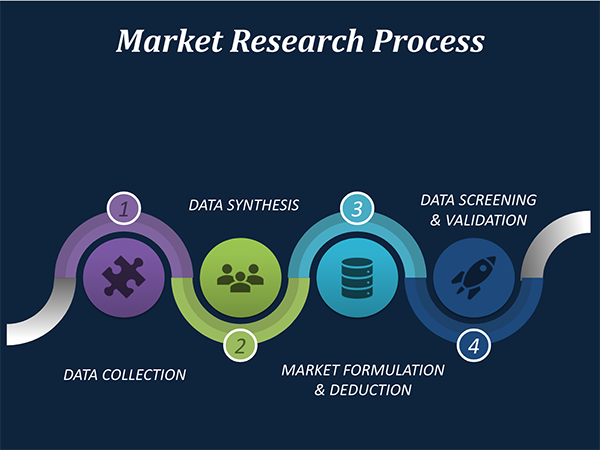
Data Collection: This stage of the market research process involves with the gathering and collecting of the market/industry related data from the sources. There are basically two types of research methods:
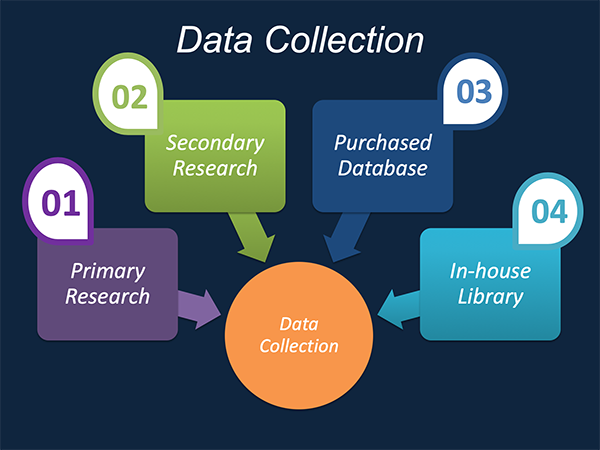
Data Synthesis: This stage includes the evaluation and assessment of all the data acquired from the primary and secondary research. It likewise includes in evaluating the information for any disparity watched while information gathering identified with the market. The data & information is gathered with consideration to the heterogeneity of sources. Scientific and statistical methods are implemented for synthesizing dissimilar information sets and provide the relevant data which is fundamental for formulating strategies. Our organization has broad involvement with information amalgamation where the information goes through different stages:
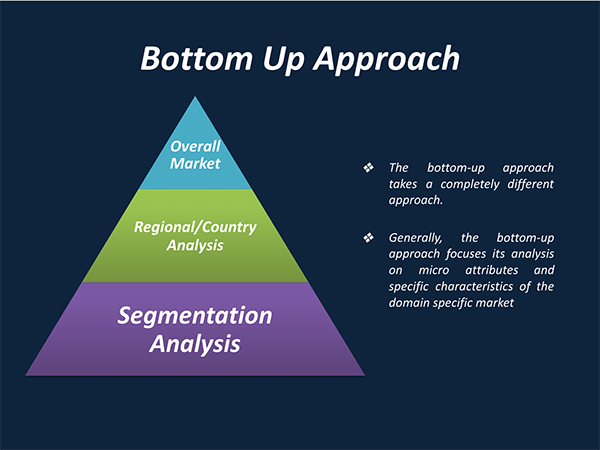
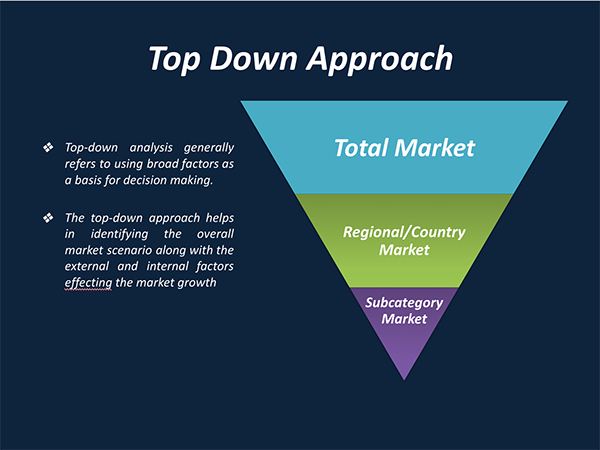
Market Formulation & Deduction: The last stage includes assigning the data & information in a suitable way in order to derive market size. Analyst reviews and domain based opinions based on holistic approach of market estimation combined with industry investigation additionally features a crucial role in this stage.
This stage includes with the finalization of the market size and numbers that we have gathered from primary and secondary research. With the data & information addition, we ensure that there is no gap in the market information. Market trend analysis is finished by our analysts by utilizing data extrapolation procedures, which give the most ideal figures to the market.
Data Validation: Validation is the most crucial step in the process. Validation & re-validation through scientifically designed technique and process that helps us finalize data-points to be used for final calculations. This stage also involves with the data triangulation process. Data triangulation generally implicates the cross validation and matching the data which has been collected from primary and secondary research methods.
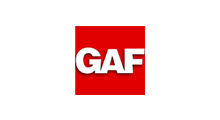

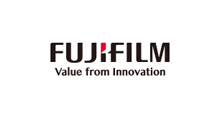
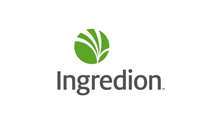

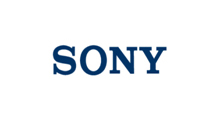
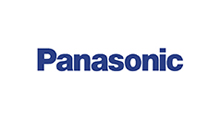
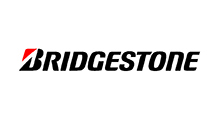
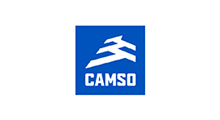
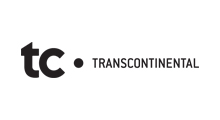
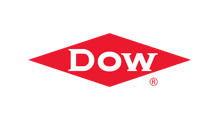
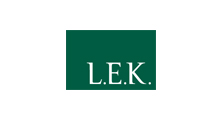

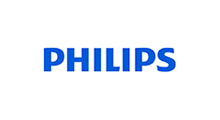
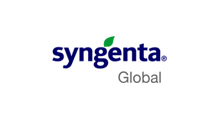
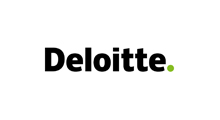

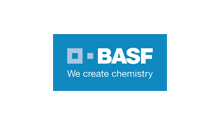
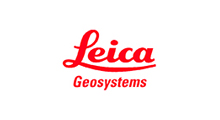
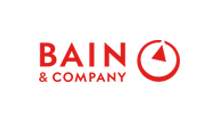
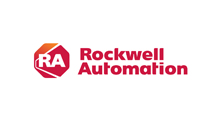
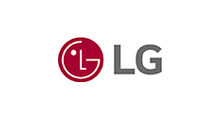
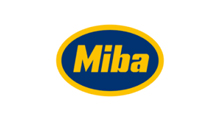
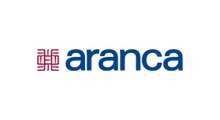
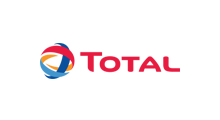
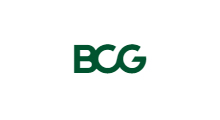
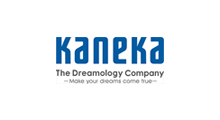
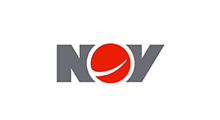
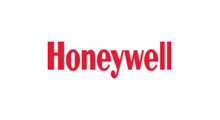
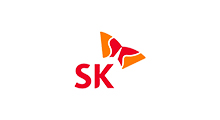
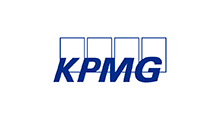
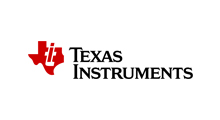
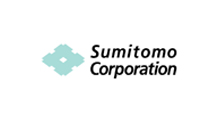
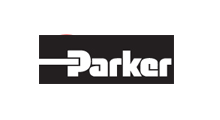
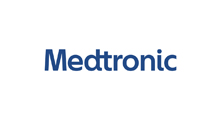
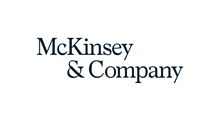


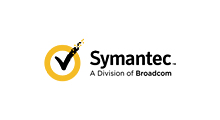
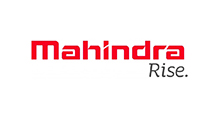
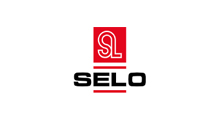
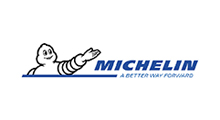

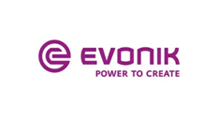

Free Customization
Countries can be added on demand
Free yearly update on purchase of Multi/Corporate User License
Companies served till date

We serve our customers 24x7 for 365 days through calls, emails and live chat options.
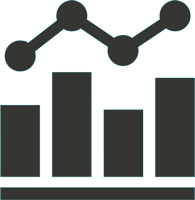
Huge database of exceptional market reports bringing market intelligence to your fingertips.

SSL enabled, we offer you various secured payment options for risk free purchase.